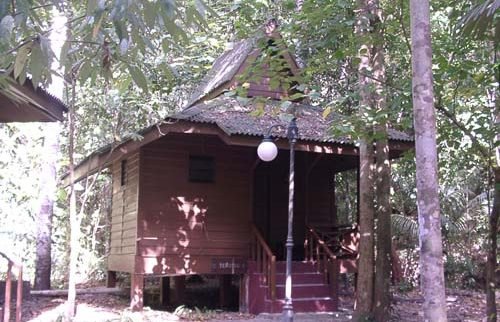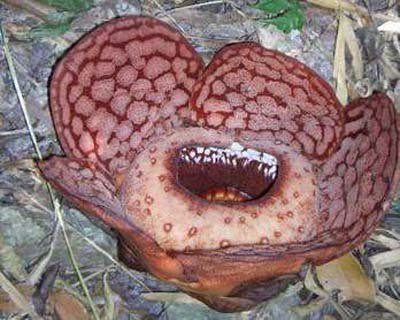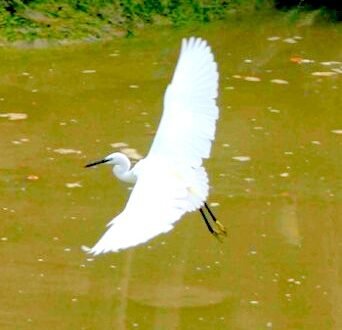
Ulu Muda and Pedu Lake Forest Reserve
Visitors must ensure that they are mentally and physically fit, as the Forest Reserve is still quite untouched hence making it impermeable at times. Boast with 109 species of mammals (more than 50% of Peninsular Malaysia’s total count) including endangered species like tigers, Sumatran rhinoceros, tapirs, flying lemurs and gaur; 110 bird species including the endangered Malay peacock pheasant and great argus pheasant; as well as 47 endemic tree species.
Kedah State Department of Forestry
8th Floor, Bangunan Sultan Abdul Halim,
Jalan Sultan Badlishah, Alor Setar – Kedah
(04) 733 3844, Fax: (04) 731 0601 – Peninsula Malaysia
GETTING THERE
Via North-South Highway, towards Thailand. Take the exit at Gurun and go along the trunk road to Gulau (TRK10). Keep going north to Gulau and then head towards Pengkalan Kampung Gubir at the Muda lake jetty. It’s approximately 2 hours drive from Alor Star, Kedah. From jetty, there was three hours boat ride to the Labuh campsite at the Forest reserve.
Alternative, lots of people choose to stay at the nearest luxury accommodation in Pedu Lake which is nearby, then make a day trip to Ulu Muda or you can arrange to stay at the Pedu lake resort after the camping trip in Ulu Muda forest reserve. For Pedu Lake, continue north for another 30 km.
THE FOREST RESERVE AT A GLANCE
Size: 122. 798 hectares of 150 – 170million year old virgin rainforest forests.
Activities: Bird Watching, Jungle trekking, Animals observations.
Flora Fauna: The flora in the Ulu Muda Nature Reserve is quite exclusive because of its geographical position. It is this position which affects the climate which is cooler in the North (Thailand) and hotter in the South allowing exotic and unique plants to thrive in the Reserve.
Encompasses two major catchments areas this unique geographical position is an attraction to the wildlife which moves along the jungles of Thailand and Malaysia. Boast with 109 species of mammals which are about 50% of the total count in Peninsular Malaysia. This including endangered species like tiger, Malayan Sun Bear, Sumatran rhinoceroses, tapirs, flying lemurs and gaur.
There are 110 species of birds in the Reserve including endangered Malay peacock pheasant and great argus pheasant. Ulu muda forest reserve also a home to numerous other species of insects, birds, monkeys and reptiles; as well as 47 endemic tree species. Ulu Muda also act as heaven for Agile gibbon, there are normally stay at the canopy as high as 20m from ground, a tiny black furry creature with incredible long arms.
There are about 10 hot springs in Ulu Muda forest reserve. Sira Hangat hot spring are regularly visit by tourist. Visitors will be able to feast their eyes on different species of animals from the mighty elephant to the shy and elusive tapirs. Some of the largest salt licks in Malaysia can be found in Ulu Muda Nature Forest Reserve. Large mammals come from afar to these salt licks therefore making them very strategic places for animal-spotting.
Another major activity not to be missed is bird-watching. During a scientific survey which ran for 5 days, 132 species of birds were found in the Reserve. Among the birds found were the Hornbills, Straw-headed Bulbul and Hooded Pita.
Pedu Lake is accessible by road whereas the Ulu Muda Lake, the other dam built deeper in the jungle, is still only accessible by river. This wild, expanse of rainforest jungle saddling the two catchment areas creates a corridor for wild animals to cross into the Thailand jungles. Covering more than 105,000 hectares, the area is one of the last remaining sanctuaries for animals such as elephants, tapirs, sumatran rhinoceros, sun bears, seladang, deer, gibbons, otters and numerous species of birds, reptiles, insects and monkeys. This reserve is unique in flora as it sits on the boundary of the northern and southern climatic zones.
This is an adventure to be experienced only by intrepid adventurers. When you’re out there in the wilderness, you’re really miles away from anyone. Just you and your guides. Arm yourself with enough food, some camping equipment and any other jungle survival kit, which you think you may need. A hammock may be a good idea to keep you dry, above the damp soil and out of reach of the many kinds of crawling, stinging insects and venomous reptiles. Also, the rainforest can be very humid and stifling and can get very wet. Clothes may not dry for days, spectacles and camera lenses fog up often. The thick primary forest canopy, several hundred feet above, cuts off most light from reaching the forest floor. Vines and roots twine across the floor, rattans whip themselves round tree trunks and criss-cross the undergrowth. If not careful, the thorns can tear flesh away, exposing wounds that are slow to heal in such damp conditions. This is only the start of it all.
For days on end there are no trails except for well-trodden treks made by elephants and rhinoceros visiting favorite salt licks or bathing pools. A number of salt licks and hot mineral springs scattered around are important sources of mineral and vitamin supplements and are frequented by a variety of wildlife. Sira Hangat, possibly the largest mineral spring in Malaysia is a great place to set camp, but if your intention is to see some action, then seat yourself in a comfortable spot high on the treetop where the foliage will hide you and where the cooler breeze will take your scent away. In order to spot wildlife in our jungles, one must be prepared to wait, avoid slapping on any scented creams or sprays that may deter mosquitoes and other pests. Be as quiet as possible.




